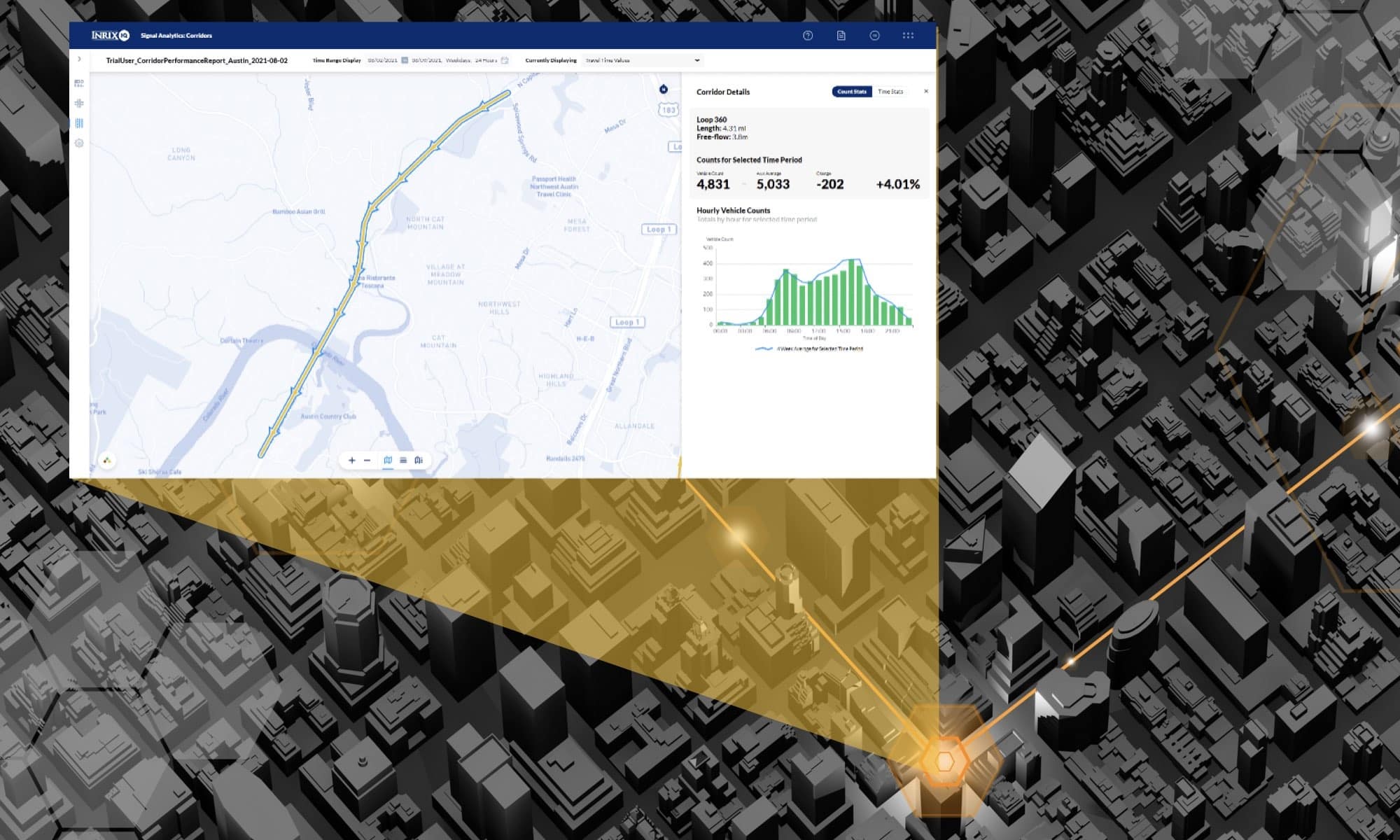
This post is part 3 of a new “how-to-series” that illustrates how easy it is for users to start analyzing their traffic signal network once signing up for INRIX Signal Analytics and selecting the signalized intersections and corridors they would like to get insights for. This third post outlines the Corridors Module and the importance of understanding of your corridor performance.
Corridors Module
The Corridors Module, can help agencies analyze and understand the reliability and performance of defined corridors at various times of the day. Simply go to the corridors module and see all the corridors that are currently available in your network. If you select a given corridor you will be presented with information about travel times on that corridor. As well as how many observations were made during the week that traveled from end point to end point of the corridor.
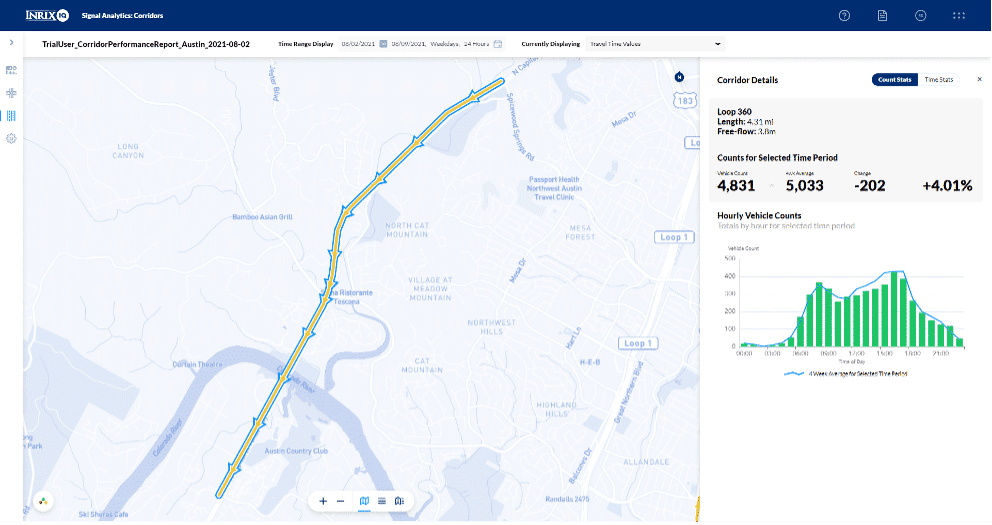
Using this powerful feature, traffic engineers can get the answers they need to important recurring questions pertaining to corridors, such as:
- What times of day is the corridor underperforming?
- How did the corridor handle traffic as a result of a special event or work zone?
- How did a specific technology improve or degrade the performance of the corridor?
- Where should we prioritize investment in additional lanes or technology?
The Daily Dashboard that you see when first logging into Signal Analytics also includes a Top 3 Corridor Issues section that provides quick insights into the performance of your corridors.
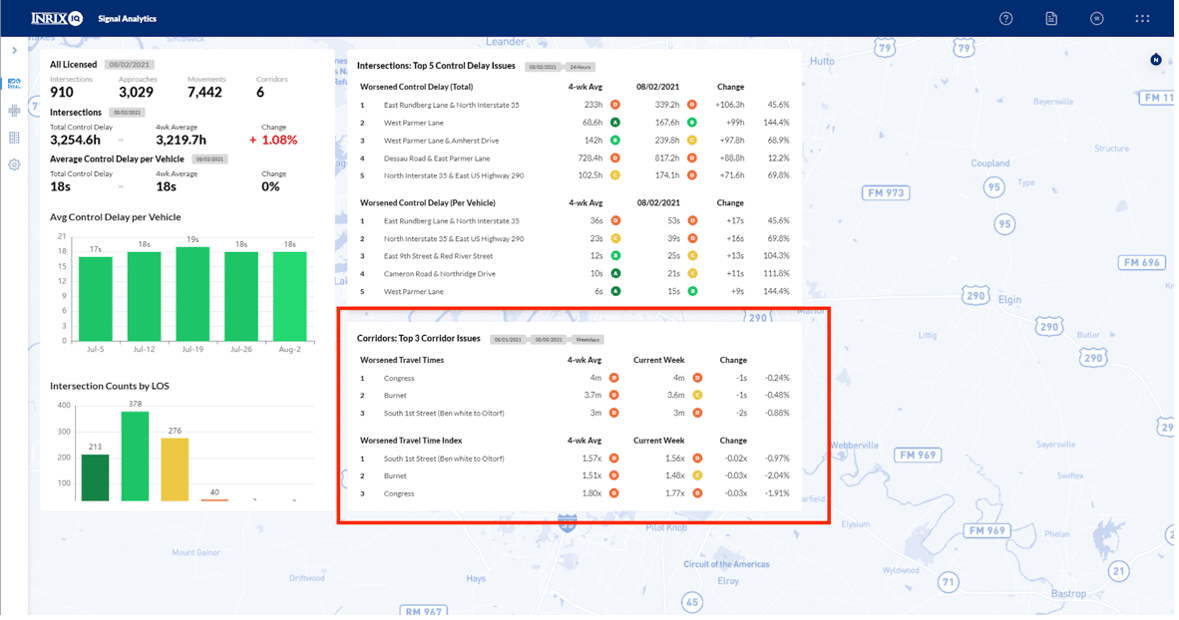
Selecting Which Corridors to Track in Signal Analytics:
To set up your first corridor, simply click on the “Admin” gear icon on the left-hand panel then switch to “Corridors”. A map visualizes all of your currently available corridors, and the right-hand panel provides some high-levels stats on the current status of all requested/provisioned corridors. To add a new corridor, click on the blue “+ New Corridor” button in the bottom right-hand side and follow the instructions provided.
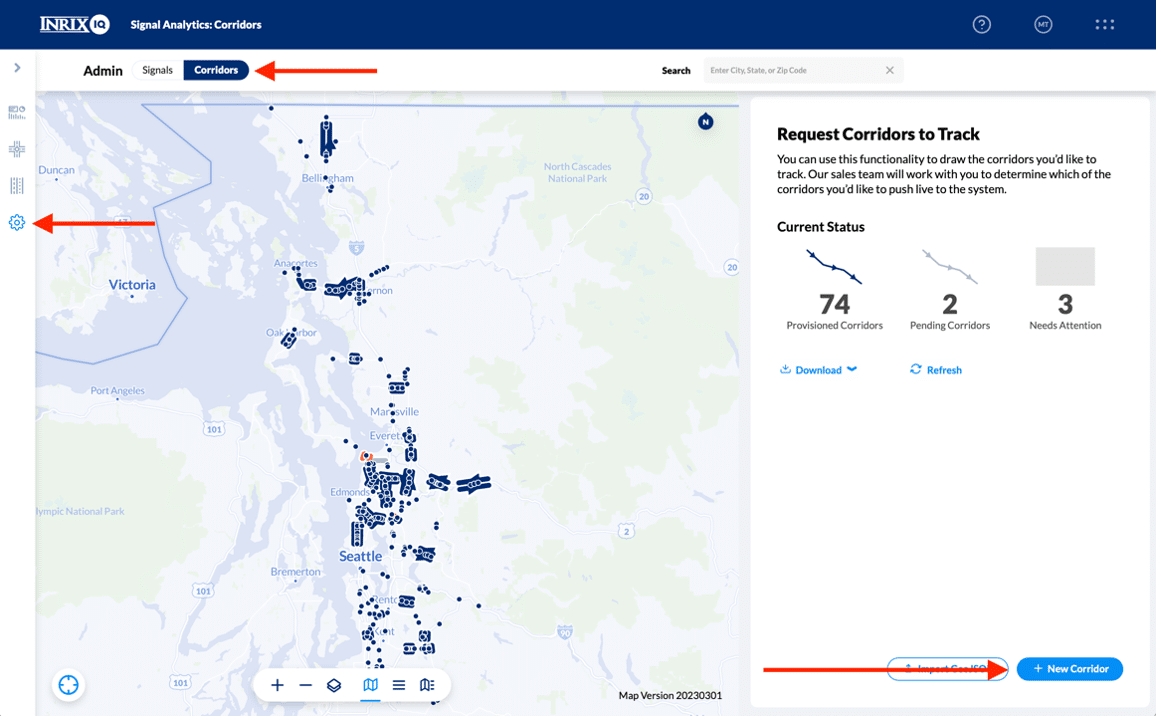
On the map, click the initial spot where you want to begin monitoring your corridor. Next, continue clicking to add waypoints along your corridor. Double-click on your last waypoint to end your corridor. Lastly, select whether you’d like to create a second corridor in the reverse direction. You can always do this later if you’d like.
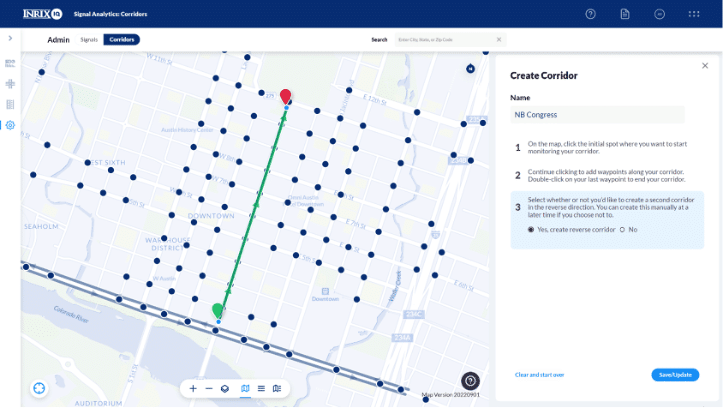
With a few clicks, you can monitor the travel times along user defined corridors, without the need for the installation and maintenance of any field equipment. If the corridor is not collecting the data that was expected, it can simply be edited with no field visit.
Summary
The corridors module can help you summarize and dig deep and corridor problems that you may have and provides valuable insights to help you make data-driven decisions to pinpoint and solve these issues before they become widespread.
If you want to learn more about Signal Analytics and how connected vehicle data can help you optimize traffic signal performance network-wide join our upcoming free webinar on February 26th, 2025 called “Optimizing Traffic Signals at Scale”.

Want a personalized Signal Analytics demo? Request a virtual demo or reach out to Signals@INRIX.com if you have specific questions.




